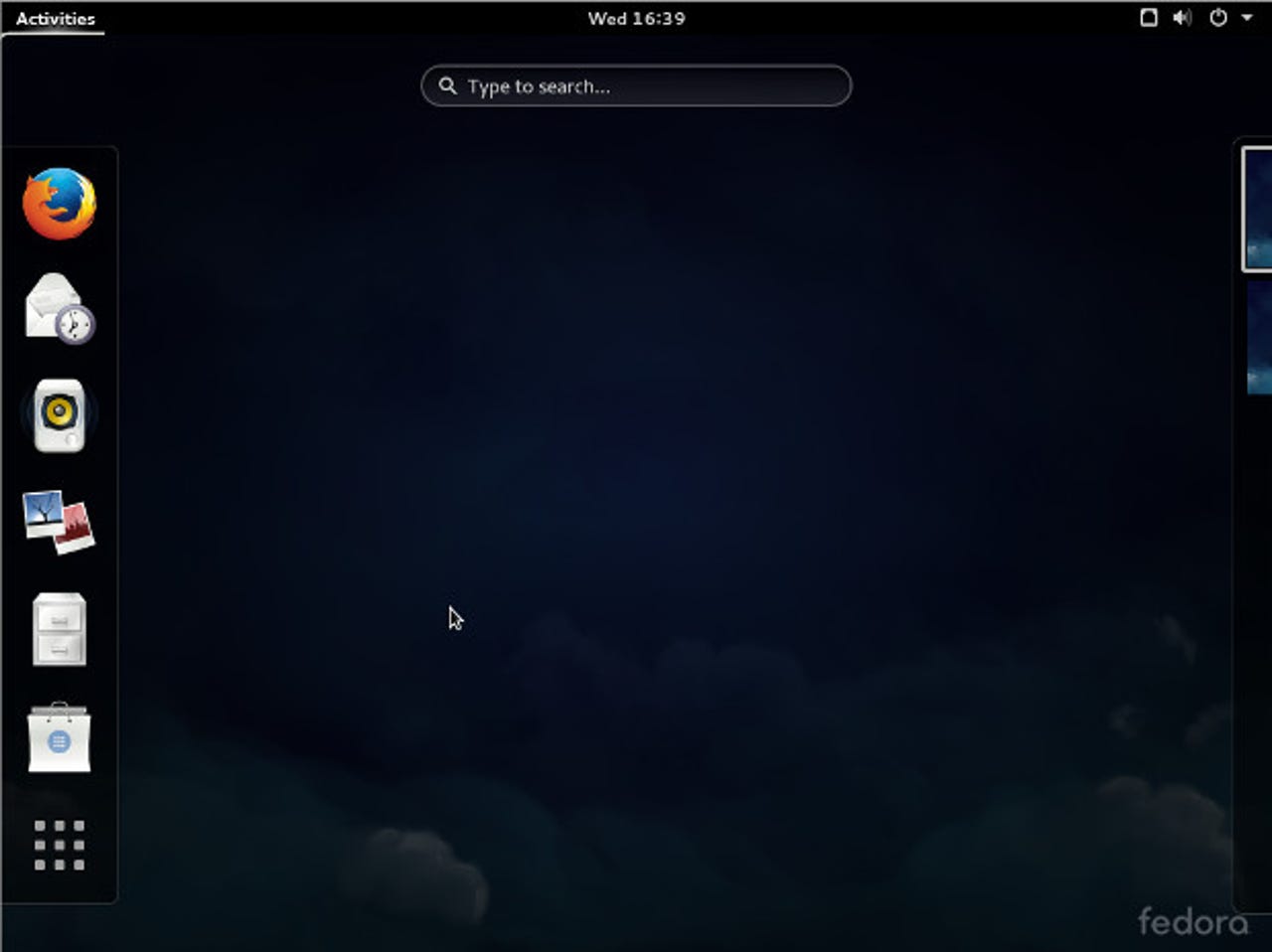Say hi to Linux's future: Fedora 21 is here

If you want to see where enterprise Linux is going, you should look at Red Hat's community Linux distribution, Fedora, today.

The latest Fedora, which has been the case for the last few updates, arrived a bit late. Never the less, it works well.
Instead of focusing on the desktop, as was once the case, Fedora now comes in three different variants: Fedora 21 Cloud, Fedora 21 Server, and Fedora 21 Workstation.
AR + VR
Each is meant to meet a specific use case. However, they all share in a common base set of packages, which includes the brand new Linux 3.18.0 kernel, RPM, yum, systemd, and the Anaconda installer. According to Red Hat, "This small, stable set of components allows for a solid foundation upon which to base Fedora."
The most significant features of each, by Red Hat's estimation, are the following:
Fedora 21 Cloud
Fedora 21 Cloud provides images for use in private cloud environments, like OpenStack, and Amazon Machine Images (AMIs) for use on Amazon Web Services (AWS), as well as a base image to enable creation of Fedora containers. Key features of Fedora 21 Cloud include:
- Modular Kernel Packaging for Cloud Computing - To save space and reduce "bloat" in cloud deployments, the Fedora 21 Cloud kernel contains the minimum modules needed for running in a virtualized environment. Altogether, the Fedora 21 Cloud image is roughly 25 percent smaller than that of previous Fedora releases, enabling faster deployment and increasing available space for critical applications.
- Fedora Atomic Host - This offers the first "Atomic" host for Fedora, which includes a minimal package set and an image composed of only the run-times and packages needed to serve as an optimized host for Linux containers. Fedora Atomic Host allows for "atomic" updates as a single unit, simplifying update management and providing the ability to roll-back updates if necessary. Fedora Atomic also includes Google's Kubernetes for container orchestration and Cockpit for container management.
Fedora 21 Server
The Fedora 21 Server variant offers a common base platform for running featured application stacks, providing a flexible foundation for web servers, file servers, database servers, and even Platform-as-a-Service (PaaS) deployments. Fedora 21 Server delivers:
- New Management Features - Fedora 21 Server introduces three new technologies to handle the management and installation of discrete infrastructure services.
- Rolekit provides a Role deployment and management toolkit that helps administrators install and configure a specific server role.
- Cockpit is a web-based user interface for configuring, managing, and monitoring servers, accessible remotely via a web browser.
- OpenLMI delivers a remote management system built on top of Distributed Management Taskforce - Common Information Model (DMTF-CIM), offering scripting management functions across machines, capabilities querying and system event monitoring.
- Domain Controller - One of the roles offered through Rolekit, Fedora 21 Server packages freeIPA's integrated identity and authentication solution for Linux/UNIX networked environments; Machines running Fedora 21 Server can now offer centralized authentication, authorization, and account information by storing user, group, host, and other object data necessary to manage network security.
Fedora 21 Workstation
Fedora Workstation is designed to offer a smooth experience for general desktop users as well as software developers. New features in Fedora 21 Workstation include:
- Streamlined Software Installation - The Software installer, a cornerstone component to Fedora 21 Workstation, allows users to quickly and easily locate their applications. It provides a responsive and fast user experience, going hand-in-hand with a greatly improved number of featured Fedora applications included with Fedora 21 Workstation.
- Wayland Support - Wayland, a powerful next-generation display server technology, is included in Fedora 21 Workstation as an experimental build, allowing developers to test and integrate their applications with Wayland's new capabilities.
- DevAssistant - A developer "helper," DevAssistant automates the setup process for a large number of language run-times and integrated development environments (IDEs); DevAssistant also integrates with Fedora Software Collections, offering access to multiple versions of different languages without worrying about system software conflicts.
I've only started playing with Fedora so I don't have a firm opinion about it yet. I will say that while the Desktop, with its default GNOME 3.14.2 interface, works well, I still don't care for GNOME. Fortunately, Fedora comes with a wide variety of "spins," so you can run with KDE, Xfce, LXDE, or, my own favorite of the official Fedora variations, MATE.
I also was annoyed to find that Fedora 21 wouldn't recognize my common-as-dirt Syntactics touchpad on my IBM ThinkPad. That quibble aside, Fedora ran flawlessly on my hardware.
Now, as always, if you're serious about pushing Linux to its limits, Fedora is the distribution for you.
Related Stories: